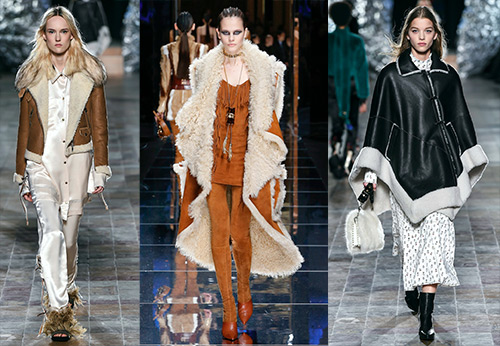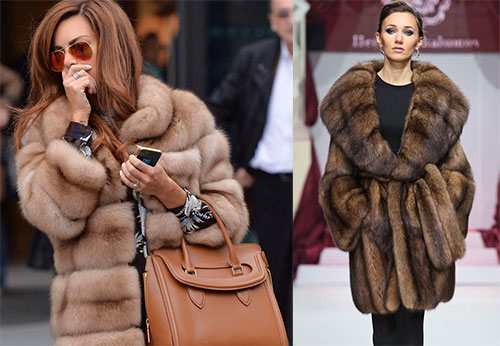Fashion history
What are Ohaben and Perizea
Recently, many women of fashion are asking themselves the question - what is ohaben, where did this word and the piece of clothing come from? In short, ohaben is the clothing of the Russian nobility from the 15th to the 18th century. Ochabush was worn by both men and women.

Ochabine in history and contemporary collections
Today's fashion offers us an incredible amount of different outerwear - in addition to coats and jackets, in the collections we see fur coats, sheepskin coats, trench coats, pea jackets, as well as capes. Each season, the number of new models is added. And with what types of folk clothing is all this diversity associated?
Frescoes in temples, tapestries, stained-glass windows, sculptures will help tell and answer many of our questions. Notes of travelers who have visited different parts of the planet, chronicles, letters have preserved for us unique evidence, including about the clothes of our ancestors.
True, with regards to European countries, there is much more evidence here than in Russia. Wars, wars ... took away many manuscripts and valuables. However, from what has survived, we can unequivocally name those things that undoubtedly served the designers of great benefit in their work. Consider at least some of them, about which we can say that they are the prototypes of today's capes and coats.

Ohaben - the history of a thing
Ohaben. Outerwear, which was widespread in Russia among the noble class. This garment was worn until about the 18th century by both men and women. Ohaben served several generations of Russian nobility - boyars and nobles.
Ohaben - ankle-length open clothes, fastened end-to-end with the help of buttonholes. "They wore ohaben on the ferryaz ... this is a long dress up to the heels, but much wider, with holes under the sleeves and with a folding quadrangular collar ..." - this is how the author tells about the life and clothes of the Russian people.
The collar of the ohabnya could reach half of the back, and the sleeves were long and narrow, and they were often tied at the back, while they had no practical value, since the hands were threaded through the cuts ("gaps") made in the front. Ochaben got its name, most likely, from the word - to ochab (to cover), that is, to cover everything that was worn under it.
Ohaben was sewn from expensive fabric with precious jewelry buttons, lined with expensive fur. He emphasized social superiority and was the clothing of the noble class.
A variety of ohabnya was opashen, which was considered summer clothing. And as the name suggests, he was put on "on the hand", that is, stitching. He also had very long sleeves hanging along the figure, but there was no collar. Such clothes were usually sewn from light fabric.

Opashen
What is Ferezea
In the 17th century, one more clothing came into use among the Russian nobility - the Ferezei. Ferezea is an expensive formal dress with fold-over sleeves, lined with expensive fur, with a fur collar, sewn from brocade and decorated with precious stones. Periseya sometimes had a trump collar. These clothes were worn by the highest nobility, including the sovereign of all Russia.
Feriaz - in the male version, this is a long, loose-fitting clothing, without a collar, with long sleeves; in the female version, it is also a long, straight, buttoned-down outerwear.

It was fastened with buttons with overhead loops or tied with strings. In the XIV-XVI centuries in Russia, the fieryaz was worn by boyars, princes, and the great sovereign himself. As many eyewitnesses who visited Russia at that time describe, the ferryaz was often room clothes, so sometimes when leaving the house, they put on a ferreze.
Often the feryaz was worn only on the right sleeve, gathering the rest of the clothes into numerous gathers, while the left sleeve hung loosely to the floor. All listed clothes of the XIV - XVI centuries.was mainly included only in the wardrobe of the noble classes - boyars and nobles, because all the details of clothing and the manner of wearing them indicate that the owner of such clothing was not involved in any kind of physical labor.
The most expensive and elegant clothes in Russia were always worn over a caftan. Anyway, in the descriptions of foreign travelers it is said that Russians put on several clothes at once.

The splendor of the royal court during the reception of foreign ambassadors amazed the guests, they all unanimously described that the royal court was doused in gold. The fabrics from which the clothes were sewn were richly decorated with pearls, sewn with precious stones, enamel, gold and silver buttons.
Satin, silk, brocade, embroidery were often used. The latter fabric was woven in a special way from gold or silver thread. The embrace was sometimes woven with patterns. It has been known in Russia since the 13th century. Such expensive clothes were inherited according to the inventory, the descendants of a noble family dressed up with them.
As you can see, among Russian folk costumes, which belonged not only to the noble and the rich, splendor and luxury were not uncommon, and therefore there is a place for today's designer fantasy.






Tell friends:
Comments and Reviews
Add a comment
Similar materials
Rating news
Shades of clothing that make women look younger
What shades of hair make women younger: rules and photos
Funny wedding dresses - photos and ideas
12 most expensive down jackets for the winter
How to look 25 at 40: tips from supermodels
Beautiful schoolgirls
Anti-aging haircuts and hairstyles for women
Fashionable skirts for autumn and winter
Fashionable women's trousers for the cold season
Fashionable and stylish sandals for summer 2020
Spring-summer 2021
 Fashionable dresses and tops with thin spaghetti straps
Fashionable dresses and tops with thin spaghetti straps
 Bandana tops: how to wear stylishly and beautifully
Bandana tops: how to wear stylishly and beautifully
 How to put together the perfect men's wardrobe for the summer
How to put together the perfect men's wardrobe for the summer
 Fashionable shorts for spring-summer 2021
Fashionable shorts for spring-summer 2021
 Fashionable skirts for spring-summer 2021: a guide to online shopping
Fashionable skirts for spring-summer 2021: a guide to online shopping
 The most fashionable dresses spring-summer 2021: styles and colors
The most fashionable dresses spring-summer 2021: styles and colors
 Fashionable total look 2021: ideas of images and trends
Fashionable total look 2021: ideas of images and trends





